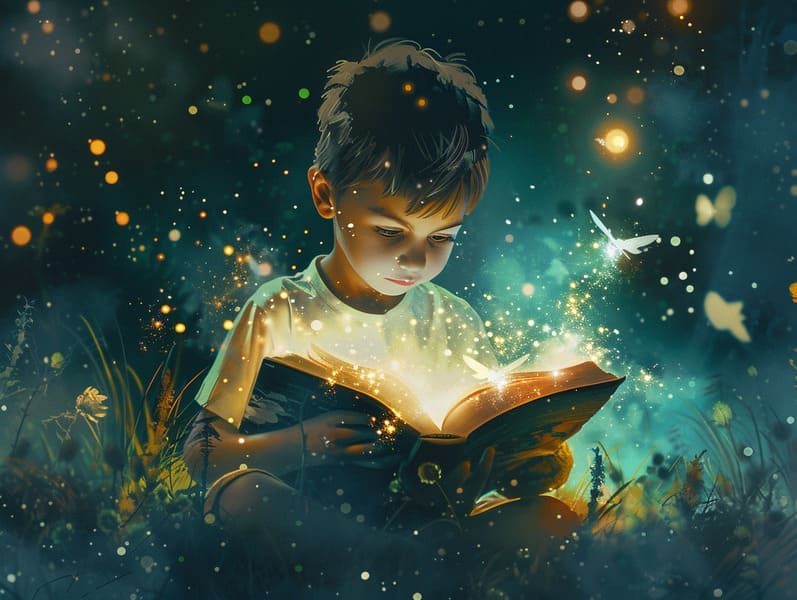
Legendary fairy tales have long histories. These stories have been recounted from one generation to the next well before they were ever transcribed. They were born from a variety of backgrounds, including Middle Eastern traditions. They were initially conveyed among elders, often carrying themes and messages related to the societal norms and beliefs of the time.
The famous Grimm duo, the two Grimm brothers, were among the first to collect many of these beloved stories. Their volume, "Grimm's Fairy Tales," included classics like "The Little Glass Slipper," "Hansel and Grethel," and "Little Snow White," which have since become hallmarks in the world of famous fairy tales. Similarly, Hans Andersen's fanciful tales, such as "The Story of the Little Mermaid," and "The Duckling that Could," have gained the love worldwide, guaranteeing their place in the pantheon of famous fairy tales.
Despite being ancient, these stories remain as pertinent as ever, especially as kids' bedtime tales. These fantastical tales are now available in different formats, including artistically illustrated books, delightful animations, and free fairy tales online.
Their persistent charm can be ascribed to several captivating elements:
Ethical Lessons: Old fairy tales often teach important moral lessons. Tales like "The Wolf and the Liar" teach the importance of truth, while "The Tale of the Tortoise and the Hare" underline the traits of perseverance and humbleness. These narratives offer young ones clear distinctions between correct and incorrect, forming their moral compass in a subtle yet important way.
Kindness and Comprehension: Old fairy tales frequently include personalities facing tests and troubles, motivating readers to resonate with their struggles and celebrate their triumphs. For instance, "Beauty and Her Beast" points out the value of looking past the exterior to acknowledge the real person of a individual, fostering sympathy and comprehension.
Cultural Perception: Many classic fairy tales are deeply ingrained in the cultural contexts from which they were born. Immersing in these fairy tales can provide fascinating glimpses into different beliefs, nurturing a sense of world appreciation and awareness.
Imagination and Creativity: The magical elements in traditional fairy tales—mythical entities—engender children’s creative thoughts. These stories lead readers to supernatural realms, kindling fantasy dreams and a sense of awe that endures a lifetime.
Old fairy tales are not only charming but also enlightening. They provide mesmerizing tools in advancing various cognitive and emotional skills in young ones. When fairy tales are narrated, they enhance language acquisition by showing new lexicon and intricate sentence structures. This practice also nurtures auditory skills and mindfulness, as little ones pay close attention, ready to see what happens next.
Furthermore, debating the themes and characters of traditional fairy tales can foster problem-solving abilities and reasoning skills. Children are educated to see patterns, anticipate outcomes, and get cause and effect. These conversations also promote young ones communicate their thoughts and feelings, advancing their emotional intelligence.
In today’s electronic age, the accessibility of web-based fairy tales has made these tales more within reach than ever. Web-based platforms and mobile apps extend ample collections of children's fairy tales that can be explored or listened via anytime, anywhere. Fairy tales recited are particularly popular, presenting an delightful method for children to enjoy these fascinating tales. Audiobooks and read-to-me stories move characters and settings to life, often supported by spellbinding audio effects and background music that enrich the narrative experience.
The lasting allure of classic fairy tales lies in their ability to modify to new eras while keeping hold of their core messages. Contemporary adaptations of these fairy tales often incorporate more representative figures and modern settings, making them meaningful to today’s audience. However, the core values of courage, understanding, and fairness remain unchanged, continuing to touch readers of all ages.
Old fairy tales also offer a sense of warmth and comprehensibility. They extend a systematic narrative with a clear beginning, middle, and end, often finishing with the termination of conflicts and the triumph of goodness over badness. This steadiness can be heartening for children, yielding a sense of firmness in an fluid world.
Classic fairy tales continue to entrance and train new generations, maintaining their fascination and pertinence in modern society. As kids' bedtime tales, they confer a perfect blend of wonder and wisdom, supporting moral values, empathy, and creativity. The existence of internet fairy tales and the prevalence of fairy tales told out loud guarantee that these old stories remain accessible to new generations.
By upholding and distributing these stories, we continue to admire the rich tapestry of cultural legacy and cultural heritage. Whether you are experiencing a colorful picture book, enjoying a web-based collection, or listening via an read more audiobook, the allure of famous fairy tales is always within reach. These fairy tales remind us of the enduring impact of stories and its ability to tie us across generations and cultures.
Be it you are browsing a gorgeously illustrated book, enjoying a digital collection, or listening through an read-aloud book, the loveliness of popular fairy tales is always within reach.
These fairy tales point out of the undying effect of tales and its ability to connect us across generations and cultures, making a tie that fascinates and enlightens alike.